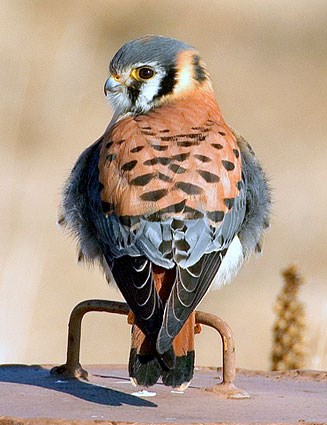Hi guys! Today let's talk about the Great Horned Owls.
The Great Horned Owls are named for their tufts of hairs that look like horns and are pointy. To an viewer they look like ears, but in actuality, they are not. Their ears are hidden on the side of their head. Great Horned Owls are usually found on the continent of North America. They are found in forests, wetlands, backyards, cities, grasslands, tropics, and arctic areas.
One place where you can find Great Horned Owls is in Duke Farms, a reserved area of land in Hillsborough, New Jersey. I was very lucky and fortunate to walk through a secluded area in Duke's Farms with one of the nicest and most knowledgeable people I have ever met. He is a true naturalist and his name is Mr. Michael Pollock. Mr. Pollock who works for the New Jersey Audubon had taken a large group of people on a once a year 5:00 am walking tour. This was a 4 hour walking tour of Dukes to see many varieties of rare birds and animals. When he found out that I was working towards my Girls Scouts Silver Award he volunteered to help me actually see the very hard to find nest of the Great Horned Owls. I just want to say thank you again! He told me all this information and was great at what he did. Immediately after his first tour he took me my Father and Brother on a near four hour walking tour.
Mr. Pollock was amazing he showed us so many different birds and animals that I believe no one else would have found. His knowledge was amazing but we were all impressed by his obvious love of all of the wildlife and his caring nature. After searching for many hours he pointed and showed us through his spotting scope what we had been searching for the Great Horned Owl in a tree. I really believe that very few people naturalists or not would have found them. We were all stunned by the beauty of the Great Horned Owl as he is a majestic bird.
The Great Horned Owl nest's in Duke Farms was built by Red Tailed Hawks and later taken over by the Great Horned Owls. He told us that the Owl's consume Voles (field mice), Rats, Squirrels, Bats, Skunks, opossums, and much more. Mr. Pollock even searched for a special object Owl Pellets! When you hear the word Owl Pellets you probably think of them as their poop, but they are not. Owl pellets are the indigestible parts of the animals that the Great Horned Owls eat but can't digest. they have two stomachs and what they can't digest they are vomit up after going into the first stomach. These usually include bones and fur. I am going to dissect the pellet in my next Blog with pictures of the contents.
Again I hope that everyone reading my blog has the great pleasure of meeting and talking to the very knowledgeable, caring and just super nice man, Mr. Michael Pollock.
Thanks for reading until next time!

-Lexi's Green World

